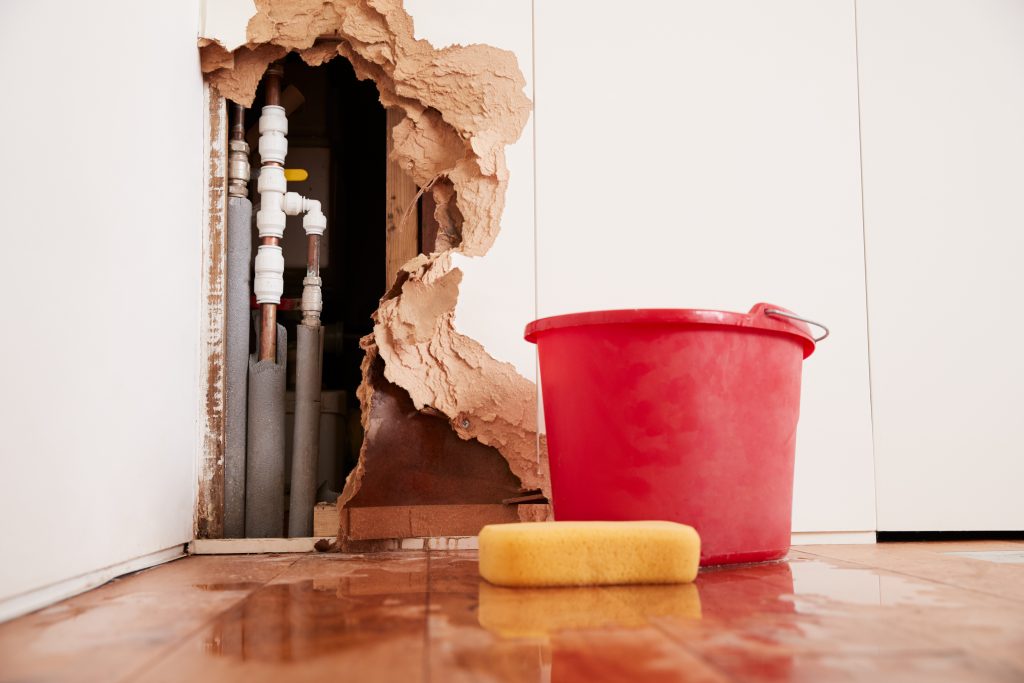Overview To Water Leakage Detection In Your Home
Overview To Water Leakage Detection In Your Home
Blog Article
This post listed below pertaining to Detecting hidden plumbing leaks is incredibly attention-grabbing. Read it for yourself and figure out what you think about it.

Early discovery of leaking water lines can reduce a possible catastrophe. Some little water leaks may not be noticeable.
1. Check Out the Water Meter
Every house has a water meter. Inspecting it is a guaranteed manner in which helps you discover leakages. For starters, shut off all the water resources. Guarantee nobody will certainly flush, make use of the faucet, shower, run the washing device or dishwasher. From there, most likely to the meter and also watch if it will change. Since no one is using it, there should be no activities. If it moves, that indicates a fast-moving leak. Similarly, if you spot no changes, wait an hour or 2 and also check back once more. This indicates you may have a slow-moving leakage that can even be below ground.
2. Examine Water Intake
If you detect unexpected modifications, despite your usage being the same, it means that you have leaks in your plumbing system. A sudden spike in your bill shows a fast-moving leakage.
A steady boost every month, even with the same behaviors, reveals you have a sluggish leakage that's additionally gradually rising. Call a plumber to thoroughly inspect your property, specifically if you really feel a cozy location on your flooring with piping underneath.
3. Do a Food Coloring Examination
30% comes from toilets when it comes to water consumption. Examination to see if they are running correctly. Decrease specks of food color in the container and also wait 10 minutes. There's a leak between the container and bowl if the shade somehow infiltrates your dish throughout that time without flushing.
4. Asses Exterior Lines
Do not neglect to check your exterior water lines too. Must water seep out of the link, you have a loose rubber gasket. One small leakage can waste loads of water and spike your water costs.
5. Inspect and Examine the Situation
Homeowners need to make it a routine to examine under the sink counters as well as even inside closets for any kind of bad odor or mold development. These two warnings indicate a leakage so punctual focus is called for. Doing regular evaluations, also bi-annually, can save you from a major trouble.
Inspect for stainings and also deteriorating as a lot of pipelines and home appliances have a life expectations. If you suspect leaking water lines in your plumbing system, do not wait for it to escalate.
Early detection of dripping water lines can reduce a prospective disaster. Some small water leakages might not be noticeable. Inspecting it is a proven means that aids you discover leakages. One tiny leakage can waste lots of water and also increase your water bill.
If you believe dripping water lines in your plumbing system, do not wait for it to rise.
How to Know If Your Home Has a Hidden Leak
Water Meter Reveals Inexplicable Water Usage
If you’d like to test whether or not there’s a leak somewhere in your home, you can do this using your water meter. Here is how to conduct the test:
Don’t use any water in your home for at least 30 minutes; this also means not turning on faucets or water-using appliances.
Go outside, and check your water meter for activity.
If your water meter shows that there was activity, even though no one was using any water, this proves that there is a leak in your home.Visible Mold or Mildew Growth
Leaks behind walls create moist, dark environments that allow mold and mildew to grow and thrive. Eventually, you might see mold growth forming on the wall closest to a hidden leak.
If mold is growing in an area that receives a high amount of moisture, such as a bathroom, it may simply be an indication that better ventilation is needed. However, if you see mold growth on a wall or the ceiling in an area where you would not expect, you probably have a hidden leak.
Musty, Mildew Odor
Sometimes you might not be able to see the mold or mildew that is growing as a result of a leak. However, the smell can give the problem away just as easily. If you catch a whiff of something musty, there’s a good chance that old water is collecting somewhere in your home that you can’t see.
Stained/Warped Walls, Ceilings, or Floors
When your home soaks up water, a variety of red flags can become visible, including ceiling stains, bubbling drywall, warped walls, and sagging floors. While these issues can be caused by excess humidity, they can also be signs that a pipe or plumbing connection has started leaking behind your walls.
Inexplicably High Water Bill
After a while, you get a general sense for what your water bill should be. If you own a pool or sprinkler system, your bill will tend to be higher during summer. However, if you receive a water bill that seems especially high, and you can’t figure out what caused it, then you may have a hidden leak somewhere that’s increasing your bill.
https://www.plumbingjoint.com/blog/2019/july/how-to-know-if-your-home-has-a-hidden-leak/

As a fervent reader on Locating water leaks, I thought sharing that piece of content was worthwhile. Sharing is caring. Helping people is fun. Bless you for your time. Visit us again soon.
Report this page